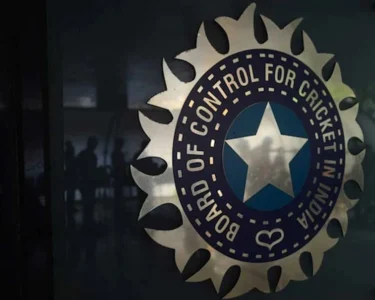As India prepares for the ICC Champions Trophy final against New Zealand in Dubai on Sunday, they recognize they are in a tough battle. The Black Caps faced India at this venue just last Sunday, giving them valuable insights into the conditions—an advantage that South Africa would not have had if they had reached the final. Here are the reasons why New Zealand represents a formidable challenge to India in this high-stakes encounter.
Pace Power and Seam Movement
One of the biggest challenges India faced against New Zealand in the group stage was the movement their pacers generated with the new ball. In their other three matches at this venue, India encountered little seam movement, but against the Kiwis, it was a different story. A major factor contributing to this is the height of New Zealand’s pacers. Their tall stature allows them to extract extra bounce and generate movement in the air due to the longer trajectory of the ball.
Moreover, the ability to bowl consistently on a good length has troubled India’s top order in past ICC tournaments. The movement and bounce, combined with disciplined bowling, have often disrupted India’s rhythm early in the innings. Given how crucial runs in the Powerplay are, Rohit Sharma’s side will need a clear strategy to counter this threat in the final.
Athleticism in the Field
New Zealand has consistently proven to be one of the best fielding sides in world cricket. As they demonstrated last Sunday, their fielding can save 30-40 runs, a factor that could be decisive in a final. Their ability to convert half-chances into wickets makes them even more dangerous.
While many teams have one or two exceptional fielders, New Zealand boasts several—players like Mitchell Santner. Will Young and Michael Bracewell would be considered top fielders in any other team, yet the Kiwis have Glenn Phillips, who is capable of turning a match around with his fielding brilliance. With their best fielders positioned inside the ring when the spinners operate, they can put pressure on Indian batsmen by cutting off singles. India will have to fight for every run, which adds an extra layer of pressure.
A Well-Balanced Batting Line-up
Like India, New Zealand’s batting unit is well-suited to the conditions in Dubai. Though they couldn’t quite execute their chase against India last Sunday, their batting depth ensures they can’t be underestimated. The top three—Rachin Ravindra, Will Young, and Kane Williamson—have the ability to provide both aggressive starts and build a steady foundation.
New Zealand’s middle order is also well-equipped to counter India’s bowling attack. Unlike most teams that have struggled against India’s spinners, the Black Caps have strong players of spin, including Tom Latham, Daryl Mitchell, and Glenn Phillips. Their recent struggle against Varun Chakravarthy was an exception, but they will be better prepared for the final.
Spin Arsenal to Challenge India
If there is one team in the tournament that comes close to India in terms of spin resources, it’s New Zealand. Led by left-arm spinner Mitchell Santner, the Kiwis have a variety of spin options in Michael Bracewell, Glenn Phillips, and Rachin Ravindra. This gives them plenty of flexibility, allowing them to adjust their attack based on conditions and match situations.
India managed to handle the Kiwi spinners well in the group-stage encounter, but the final presents a fresh challenge. This time, New Zealand will come in with a clear game plan, knowing what to expect from the conditions and the Indian batsmen. Moreover, the final will be played on the same pitch that hosted India’s match against Pakistan, which means the spinners could play a pivotal role.
Final Thoughts
India may be the favorites on paper, but New Zealand’s ability to exploit conditions, their athleticism in the field, and their well-rounded bowling attack make them a tough opponent. Rohit Sharma and his team will have to bring their A-game to overcome the Kiwi challenge and lift the ICC Champions Trophy on Sunday.







